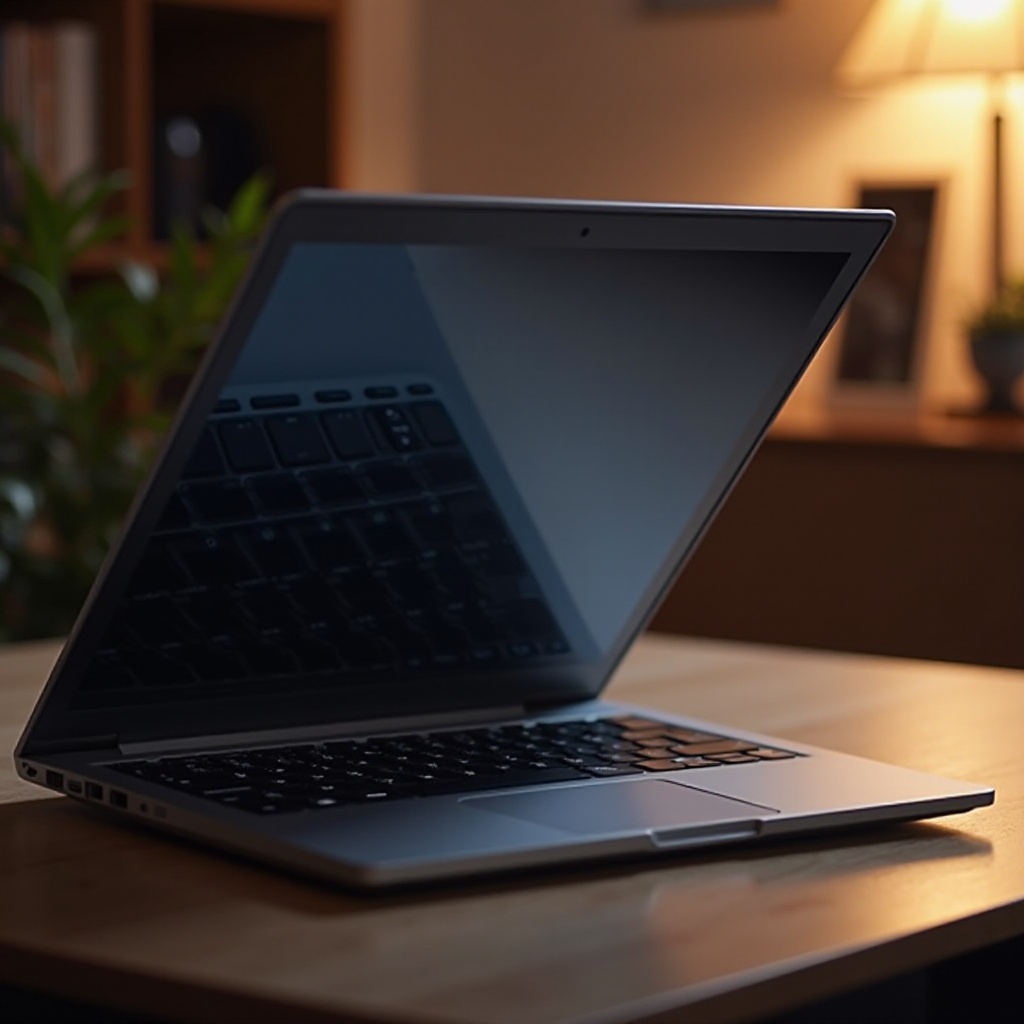Introduction
Lenovo Chromebooks are favored for their efficiency, yet keyboard issues can compromise your productivity. Whether facing keys that don’t respond or issues relating to the software, knowing how to address these problems effectively is key. This guide aims to provide insights into common Lenovo Chromebook keyboard malfunctions and offers solutions to tackle both software and hardware issues. Understanding how to resolve these problems will save you time and reduce frustration, ensuring your Chromebook runs smoothly.

Identifying Keyboard Issues on Lenovo Chromebooks
Understanding the specific keyboard issues you experience is the first step toward fixing them. Commonly reported issues include keys failing to respond, entire keyboards not functioning, or unexpected results when typing. Symptoms like these may arise from either software glitches or hardware damage.
Start by noting any error messages or erratic behavior, such as delays or irregular key response. Testing your keyboard in different applications helps in identifying whether the problem is isolated or widespread. Recognizing the nature of the problem allows you to apply the most effective resolution strategy, whether through software adjustments or hardware examinations.

Software Troubleshooting Methods
Keyboard problems on Lenovo Chromebooks are frequently software-related and can often be resolved with simple troubleshooting techniques.
Checking Chrome OS Updates
Ensure your Chrome OS is frequently updated, as this can remediate and preempt many keyboard issues:
- Click the time display at the screen’s bottom-right corner.
- Go to ‘Settings’ and select ‘About Chrome OS.
- Choose ‘Check for updates’ and allow any available updates to download and install automatically.
Performing a Hard Reset
Glitches affecting the keyboard may be resolved with a hard reset:
- Shut down your Chromebook.
- Simultaneously press and hold the ‘Refresh’ key and tap the ‘Power’ button.
- Once the Chromebook starts, release both keys.
This process resets the hardware without data loss, potentially resolving minor issues.
Adjusting Keyboard Settings
Misconfigurations in keyboard settings may cause problems. Follow these steps to adjust them:
- Open ‘Settings.
- Navigate to ‘Device’ and click on ‘Keyboard.
- Make necessary adjustments to ensure correct key mapping and function enablement.
Hardware Troubleshooting Techniques
If software solutions do not rectify your keyboard issues, hardware troubleshooting may be necessary. Careful inspection and intervention can address these problems.
Inspecting for Physical Damage
Look for clear signs of physical damage, such as cracks, spills, or warping that might affect functionality. If apparent damage is present, professional repair or replacement might be needed.
Cleaning the Keyboard
Accumulated dust and debris can impact keyboard performance:
- Power off the Chromebook.
- Use a can of compressed air to clear debris from under the keys.
- Gently wipe the keyboard surface with a soft cloth.
Regular cleaning can drastically enhance keyboard functionality.
Checking Keyboard Connections
Internal disconnections may lead to malfunctions. If comfortable with handling hardware:
- Turn off the device and remove the back cover.
- Check the ribbon cable connection to the motherboard.
- Reattach any loose connections carefully.
Proceed with caution to avoid damaging internal components.
When to Contact Professional Support
If the above solutions do not rectify the issue, professional help may be necessary. Persistent problems, especially those involving internal hardware, need expert help. Contact Lenovo support or visit a certified repair facility to avoid warranty voidance or additional damage. Professionals have the skills and tools to handle complex issues safely.

Preventative Measures and Best Practices
Taking preventative steps can protect against future keyboard problems. By adopting these practices, you can maintain your Lenovo Chromebook keyboard’s health.
Regular Maintenance Tips
- Regularly clean the keyboard with compressed air to prevent dust accumulation.
- Avoid consuming food or drinks nearby to prevent spills.
- Consistently check for system updates to keep Chrome OS current.
Accessories to Protect Your Keyboard
Consider using a keyboard cover to defend against dust and debris. Additionally, a protective case can protect your entire Chromebook from physical impact, aiding component longevity.
Conclusion
Addressing Lenovo Chromebook keyboard issues might seem overwhelming initially, but with the proper approach, many common problems are manageable. This guide assists you in diagnosing issues and provides effective solutions. Through regular maintenance and adopting proactive measures, you can ensure your Chromebook keyboard remains reliable and efficient. If your efforts fall short, remember that professional support is always available to restore full functionality.
Frequently Asked Questions
Why is my Lenovo Chromebook keyboard not responding?
Unresponsive keyboards can result from software glitches, outdated OS, or debris. Resolve issues by performing a hard reset and updating Chrome OS.
How do I reset my Lenovo Chromebook keyboard?
To reset, turn off your Chromebook, press the ‘Refresh’ key, then tap the ‘Power’ button simultaneously. Release both keys as the device powers up.
Can a faulty keyboard be repaired or replaced on my own?
You can perform minor cleaning and checks independently, but for internal repairs, professional help is recommended to avoid damage.
